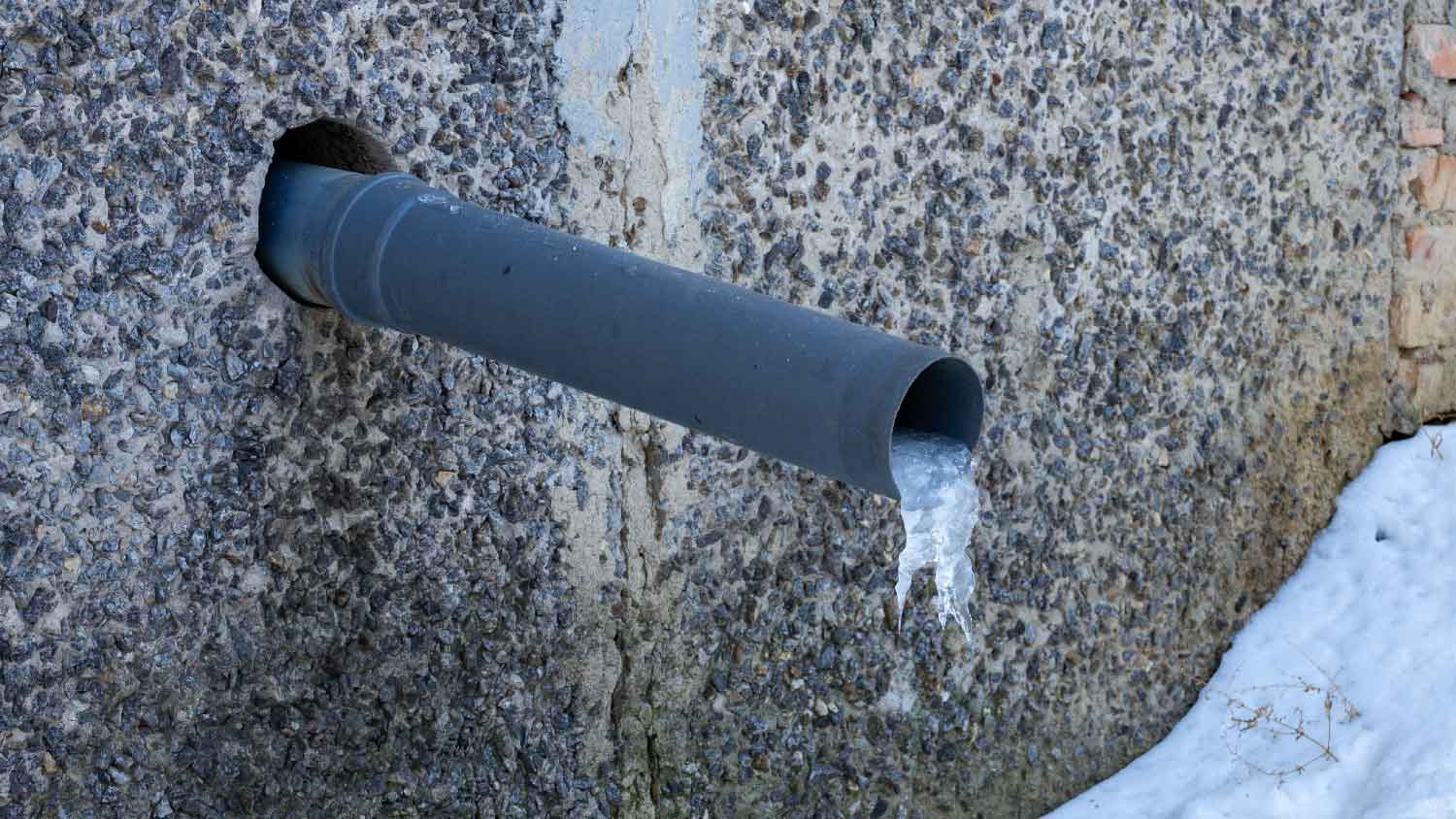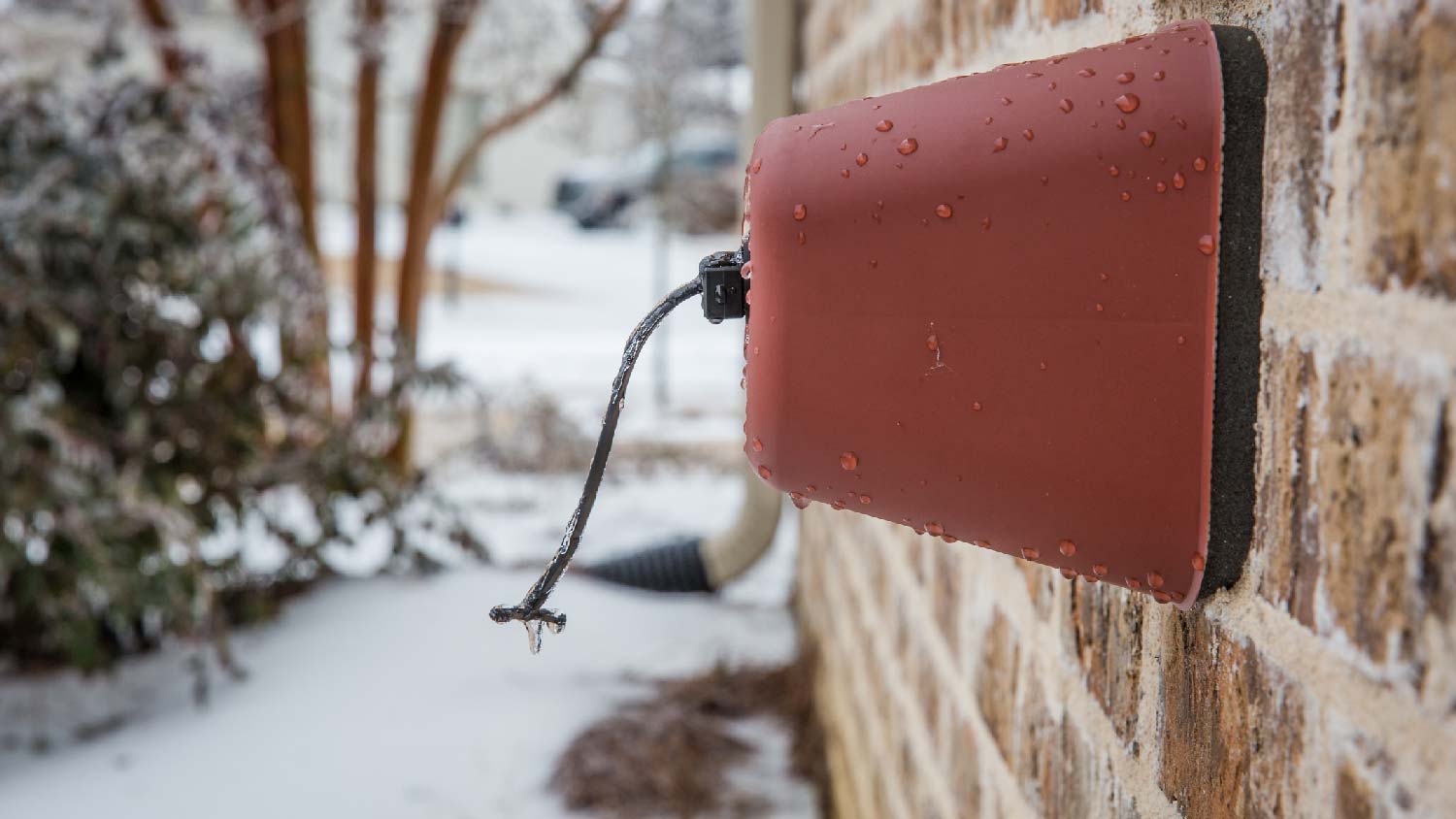How to Defrost a Frozen Drainpipe: 5 Methods to Fix One of Winter’s Biggest Woes
This ultracool DIY will warm up your icy pipes


You know the drill if you live in an area with frigid winters. Drainpipes can freeze—and the potential damage can send a chill down any homeowner’s spine. The sooner you notice your pipes freezing, the faster you can thaw them and prevent serious issues. This guide will show you how to defrost a frozen drainpipe with items you have in your home.
Why Should I Defrost Frozen Drainpipes?
When enough water freezes and expands within a drainpipe, there’s nowhere it can go but out. In other words, you’re looking at a one-way ticket to a burst pipe and the potential for expensive repairs.
A small crack in a frozen drain line can cause water damage, mold, and foul odors. Depending on where the pipe breaks, it can also expose your household to harmful sewer gases and raw sewage. A major leak even has the potential to damage your foundation.
How Much Does It Cost to Replace Drainpipes?
For most homeowners, the cost to replace a damaged drainpipe is $225 to $1,170. However, a sewer line replacement or burst pipe repair can cost up to $5,000, not including cleanup, water damage restoration, and potential mold remediation costs.
How to Tell if a Drainpipe Is Frozen

Signs like a blocked sink can indicate a frozen pipe in your plumbing system. Here’s what to look out for:
Unusual noises: Gurgling, banging, or clanking noises may indicate that ice is moving inside the pipe.
Foul odors: When there’s a blockage from ice, waste builds up and sewer gas can back up into your home.
Frost or condensation: If you notice frost or condensation forming on the outside of your pipes, it’s a good indicator that the water inside is starting to freeze.
Slow-draining fixtures: Ice can block a drain enough that water may drain slowly or not at all.
Sewage backing up into other fixtures: When the drain in one area of your plumbing is blocked by ice, sewage might back up into other fixtures.
Cracks, leaks, or bulging pipes: These signs indicate active damage, so the best option is to call a plumber who can diagnose the issue.
How to Defrost a Frozen Drainpipe

When drainpipes freeze, it typically happens in the P-trap. This is the curved part of your drain underneath your sink, shower, or tub (though washing machine drains can also freeze). Once you locate the frozen pipe, you can try the following steps to thaw it.
Use a Space Heater
Space heaters are a go-to for defrosting frozen drainpipes. Open the cabinets around the pipe and ensure there’s nothing flammable nearby. Place your space heater near (but not directly on) the frozen pipe. Set it on a medium heat setting and wait 20 to 30 minutes for the pipe to thaw., but don’t leave the heater unattended.
Use a Hair Dryer
If all you have is a hair dryer, use the same motions over the frozen pipe as if you were drying your hair. Blow warm air on the pipe, moving the hair dryer back and forth. After 20 to 30 minutes, the pipe should thaw.
Wrap the Pipe in Hot Towels
One of the safest ways to defrost a frozen drainpipe is to use a warm towel. Soak a towel in hot water, then drape it over the pipe. Replace the towel every half hour until the pipe thaws.
Pour Hot, Salted Water Down the Drain
If you don’t know where the drainpipe is frozen, you can defrost it using boiling water and salt. Boil 1 part salt to 3 parts water in a pot, then carefully pour the mixture down the drain. Salt can lower the freezing point of water and help melt the ice.
Remember that boiling water can damage PEX, PVC, or CPVC pipes over time, so take caution when choosing a defrosting method.
Use a Heating Pad
Place a heating pad over a frozen drainpipe to help defrost it. Drape the pad gently on the pipe's curve, and wait 20 to 30 minutes for it to defrost.
How to Prevent Frozen Drainpipes

Pipes start freezing at temperatures below 20 degrees Fahrenheit. Some pipes are more vulnerable to outside temperatures—like those in external walls, basements, or unheated attics—and may freeze when temperatures dip below 32 degrees. To prevent your drainpipes from freezing, use these tips:
Set your thermostat to a minimum of 55 degrees, even if you’re not home.
Open cabinets and closets around pipes to let warm air circulate.
Cover your outdoor faucets and drip indoor faucets.
Insulate vulnerable pipes, such as uninsulated pipes, copper pipes, and pipes near exterior walls.
Flush toilets and use sinks regularly to keep water moving through the drain line.
DIY vs. Hiring a Pro
Most homeowners can defrost their drainpipes if there aren’t any signs of existing damage. After you thaw the pipe, leave the water running for a few minutes and examine your plumbing for a leak or burst pipe.
A local plumber can help identify the location of the ice and make recommendations for necessary repairs. Call a plumber if:
You notice a leak or signs of water damage
Your pipe is cracked or bulging
You tried to defrost your pipe, but the drain is still backing up
Your pipes keep freezing even though you’ve taken precautions to prevent it
If you go the DIY route, familiarize yourself with your home’s water shut-off valves. Avoid pouring corrosive chemicals down the drain, and never use an open flame to defrost pipes—even if it’s your favorite scented candle. It poses a fire risk, and sewer gas is flammable.
Our pro crawled under my house to thaw a frozen pipe coming out of the well tank, showed me how to keep the water flowing to help get rid of remaining blockages, and recommended using a temporary heater. I plan on calling them back to insulate all the pipes so they don't freeze again.
Frequently Asked Questions
Pouring hot water down a drain can help unfreeze drainpipes, but it may not thaw a frozen water pipe that is completely blocked further down in your plumbing. In some circumstances, it can cause more ice buildup. You may need to use another method, like a space heater or hot towel. If you use boiling water to thaw a drainpipe, make sure your pipes can handle the heat. Over time, boiling water can damage plastic pipes.
It’s sometimes difficult to distinguish a clog from a frozen drainpipe since ice technically causes a clog. If the temperature doesn’t tip you off, there are a few additional signs that your pipe is frozen. Look for condensation and frost around the pipes. Ice in pipes can cause a banging or clanking noise as opposed to a clog from a softer material.





- Gas Plumbers
- Plumbing Repairs
- Sump Pump Installation
- Wood & Pellet Stove Repair
- Shower Repair
- Wood Stove Services
- Emergency Plumbers
- Fire Sprinkler Contractors
- Perc Test Companies
- Toilet Repair & Installation
- Boiler Repair
- Sewer Line Repair
- Faucet Repair
- Main Drain Camera Companies
- Foundation Drain Installation
- French Drains
- Bathtub Replacement
- Subcontractors
- Storm Drain Contractors
- Affordable Plumbing
- Plumbing & Heating Companies
- Bathroom Repair Services
- Sink Installation
- Commercial Plumber
- Barndominium Builders
- Water Line Repair
- Faucet Installation
- Water Line Installation
- Leak Detection
- Can Frozen Pipes Cause Blocked Sink Drains?
- How To Thaw Frozen Underground Pipes
- Well Water Frozen? Try These Hacks to Fix Frozen Well Water Pipes
- How to Spot a Frozen Water Heater and Fix Frosted Plumbing
- Do Copper Pipes Freeze and Can You Prevent It?
- 6 Temporary Fixes for Leaking Pipes
- How to Tell if a Pipe Bursts in Your House Before Water Takes Its Toll
- How to Fix Frozen Washing Machine Pipes
- 7 Ways to Fix a Copper Pipe Leak: Temporary and Long-Term Solutions
- Should I Drip or Cover My Outdoor Faucets During the Winter?










